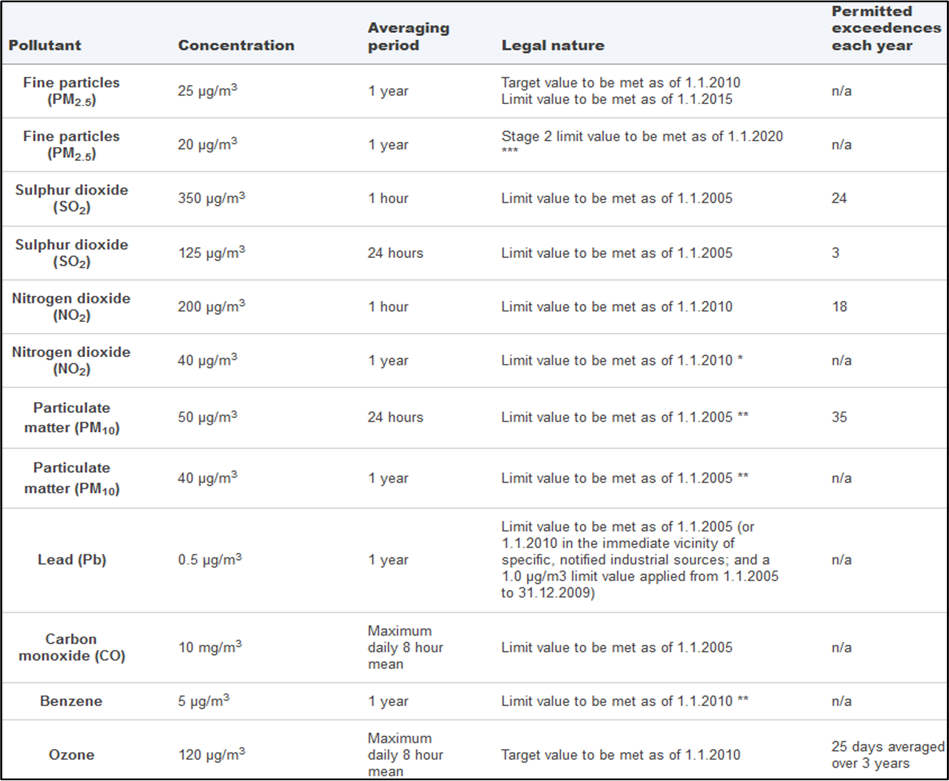1.4. Regulations and standards
The WHO Air Quality Guidelines (AQGs) recommend levels and interim targets (Table 1.2) for the following key air pollutants: particulate matter, ozone, nitrogen dioxide, sulphur dioxide, and carbon monoxide. These are designed to offer guidance in reducing the health impacts of air pollution based on expert evaluation of current scientific evidence.
Table 1.2: World Health Organisation Air Quality Guidelines for the following pollutants particulate matter (PM10 and PM2.5), ozone (O3), nitrogen dioxide (NO2), sulphur dioxide (SO2), and carbon monoxide (CO) (µg = microgram; WHO, 2021).
a99th percentile (i.e. 3-4 exceedance days allowed per year).
bAverage of daily maximum 8-hour mean O3 concentration in the six consecutive months with the highest six-month running- average O3 concentration. [Editor's summary: maximum 8-hour mean in 6 consecutive months]
The WHO guidelines serve as goals for air quality policies. To reach these, the EU air quality policy consists of a series of directives defining ambient air quality standards, based on the latest research on the health effects of air pollution. Recent European air quality standards and objectives are summarised in Table 1.3.
Table 1.3: European standards and objectives (European Commission, 2022)
*Under Directive 2008/50/EU, the Member State could apply for an extension of up to five years (i.e. maximum up to 2015) in a specific zone. The request was subject to an assessment by the Commission. In such cases within the time extension period the limit value applies at the level of the limit value + maximum margin of tolerance (48 µg/m3 for annual NO2 limit value).
**Under Directive 2008/50/EU, the Member State was able to apply for an extension until three years after the date of entry into force of the new Directive (i.e. May 2011) in a specific zone. The request was subject to assessment by the Commission. In such cases within the time extension period the limit value applies at the level of the limit value + maximum margin of tolerance (35 days at 75µg/m3 for daily PM10 limit value, 48 µg/m3 for annual PM10 limit value).
***Stage 2: indicative limit value as referred to in Directive 2008/50/EU.

